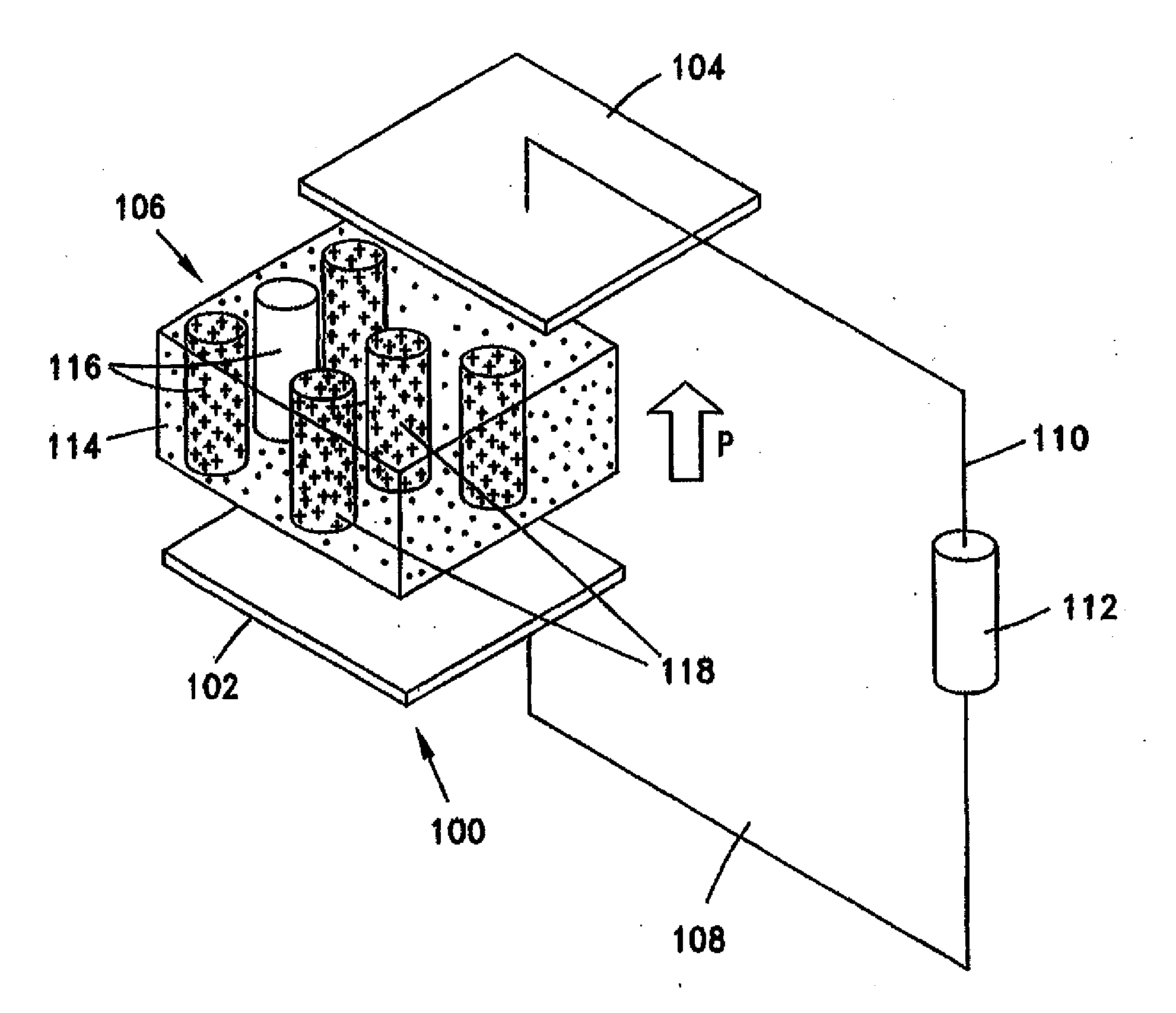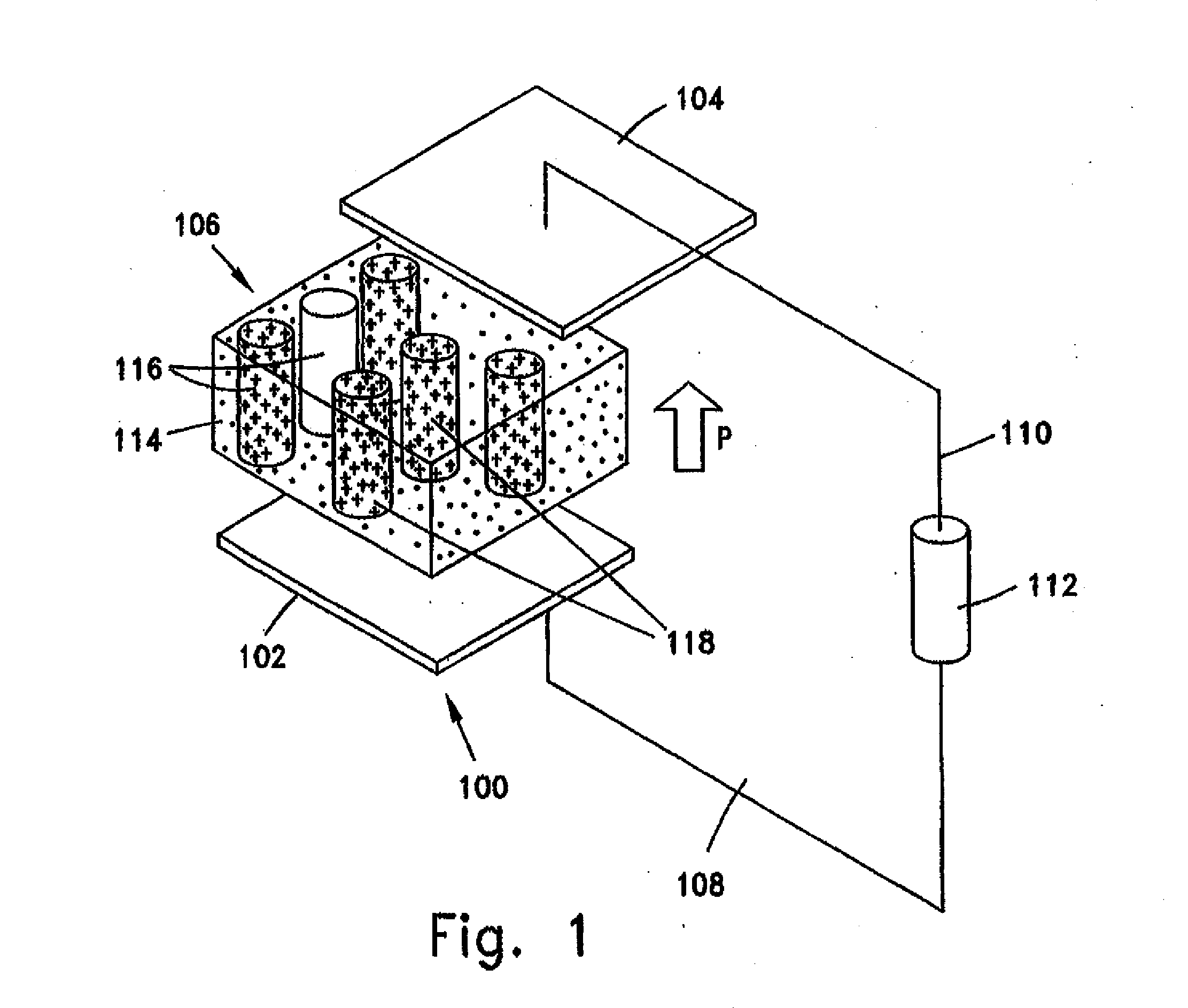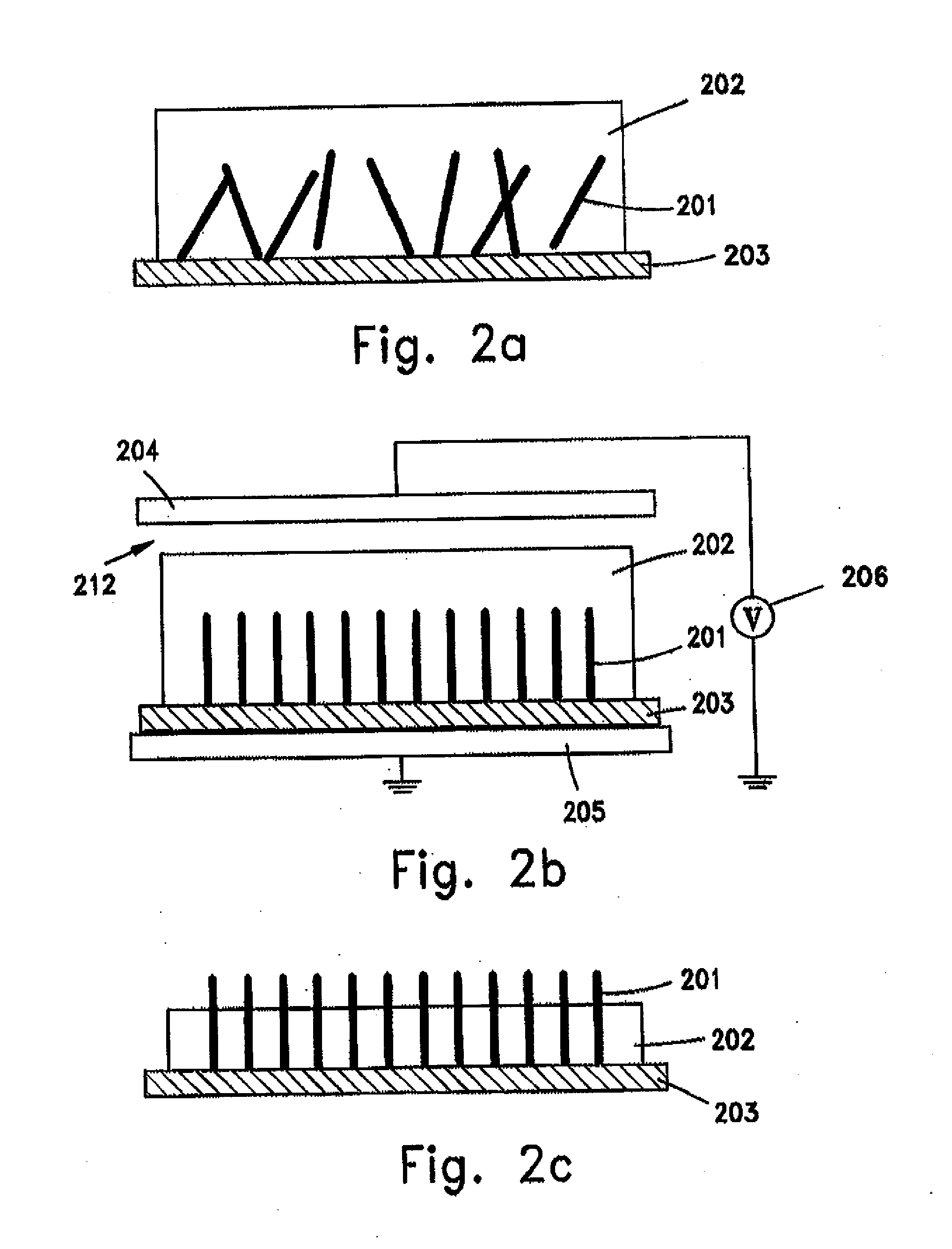Photovoltaic device on polarizable materials
a photovoltaic device and polarized material technology, applied in the field of photovoltaic, can solve the problems of limited depth of depletion region, complicated manufacturing of solar cell pin-junction devices, and limited optical depth of p-n junction devices, and achieve the effect of high electric strength
- Summary
- Abstract
- Description
- Claims
- Application Information
AI Technical Summary
Problems solved by technology
Method used
Image
Examples
first embodiment
[0053]the photovoltaic device of the present invention is shown in FIG. 1. Photovoltaic device 100 comprises a pair of collecting electrodes 102, 104 and a bulk region 106 confined there between. Each of the collecting electrodes is connected by a respective wire 108, 110 to a resistive load 112. The bulk region is comprised of a matrix portion 114 in which are distributed a plurality of discrete parallel tubular-shaped channels 116. Each of the channels 116 extends through the matrix portion 114 and is entirely filled with a host portion 118. In FIG. 1, for the sake of clarity one of the channels 116 is shown empty, while the rest of the channels are shown filled with the host portion 118 configured as elongate members, e.g. rods, bars whose cross-sectional shape matches the cross-sectional shape of the channels 116.
[0054]In this embodiment of the invention the matrix portion 114 functions as a field inducing component responsible for persistent polarization directed along the dire...
second embodiment
[0073]the photovoltaic device of the invention is depicted in FIG. 4. The bulk region of the device consists of a matrix portion 401 constituted in this example by the field inducing component material. The matrix portion is made of a ferroelectric material, which is capable of retaining persistent polarization in the direction shown by arrow P. The matrix portion is provided with a plurality of channels 402 that pass through it and are open at opposite sides of the bulk region. Channels 402 are filled with a photoactive material 406 of the photoactive component. The bulk region is confined between a pair of opposite collecting electrodes 403 and 404. The collecting electrodes are electrically connected with a resistive load 405. In general the structure and dimensions of this device, as well as the materials of the photoactive component and the field inducing component are similar to those already described in connection with the previous embodiment. However in contrast to the prev...
third embodiment
[0086]In the third embodiment the material of the field inducing component should be able to absorb and to keep injected charges for a long period of time (instead of persistent polarization). This technology has been known for a long time and is used to manufacture the membranes for so called electrets microphones. Organic materials that are suitable for the field inducing component are, for example, polycarbonate or PMMA. SiO2 and SiN can be named as examples of suitable inorganic materials. The injection of the charges into the materials of field inducing component is performed by the well-known corona charging process.
[0087]As an example of a method of manufacturing a device according to the third embodiment, a modification of the manufacturing method of the second embodiment (shown in FIGS. 5a to 5f) can be chosen. All steps of the method are as described herein above with the exception of the step shown in FIG. 5d, i.e. the step of filling the free space of the spatial structu...
PUM
 Login to View More
Login to View More Abstract
Description
Claims
Application Information
 Login to View More
Login to View More - R&D
- Intellectual Property
- Life Sciences
- Materials
- Tech Scout
- Unparalleled Data Quality
- Higher Quality Content
- 60% Fewer Hallucinations
Browse by: Latest US Patents, China's latest patents, Technical Efficacy Thesaurus, Application Domain, Technology Topic, Popular Technical Reports.
© 2025 PatSnap. All rights reserved.Legal|Privacy policy|Modern Slavery Act Transparency Statement|Sitemap|About US| Contact US: help@patsnap.com



